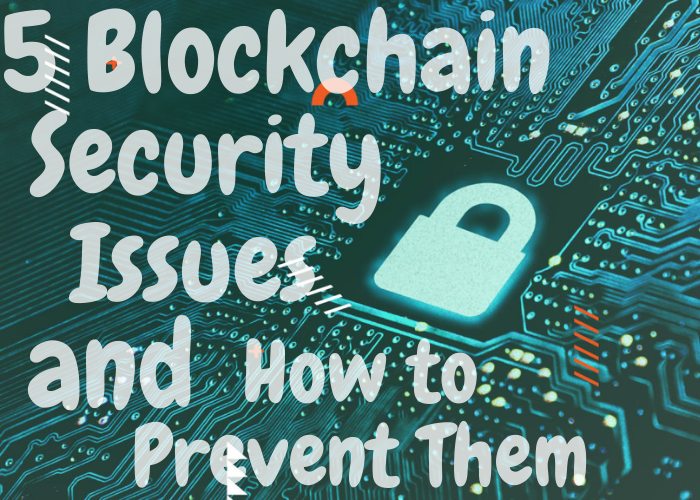Blockchain security is a major concern for everyone. It’s the backbone of the financial sector, the government, and our personal lives. Security is a key factor in the success of any technology, and blockchain is no different. Blockchain is the future of technology. It’s transforming the way we live, work, and interact with one another. Every day, we are creating more data. The blockchain is a perfect way to store and share data. Blockchain security is a top concern of anyone dealing with cryptocurrencies. And rightly so, since the numbers don’t lie. Hacking attacks are on the rise, and growing more sophisticated every day. CEO of Company 0, Philip Saunders said: “Scams and malicious attacks are a reality of the world we operate in.” It’s important to note that the rise in blockchain security problems are an inevitable byproduct of blockchain’s fundamental nature. Blockchain-based technology inherently creates digital assets, which can be stolen, conned and hacked. At the same time, blockchain creates a new, verifiable form of digital identity and financial transaction. This dual-edged sword requires a new form of digital security that the traditional world has never seen. “The people behind blockchain apps need to develop new security techniques and operate best practices in the same way the financial services sector does today. These new tools are meant to help both developers and users create more resilient blockchain networks.” Saunders added. Shawn Wilkinson, Co-Founder and CEO of Storj Labs, explains: “Blockchain security is very important because it’s the underpinnings for our entire economy. We’re building critical digital infrastructure for the entire planet, and if it isn’t secure, then we’re all in trouble. This is especially important for businesses, who need to keep data secure, and for individuals around the world who are keeping their most valuable information on the blockchain.” It’s clear that there is a need for more blockchain education, more tools and greater investment in blockchain security to protect the future of blockchain.
51% Attacks
The first thing that popped into my head when I heard the word blockchain was Bitcoin. I thought it was a little nerdy, but when I found out about the blockchain I realized its potential. Blockchain is a decentralized and distributed ledger that records transactions in an immutable way. With blockchain, you can actually transfer money to anyone in the world with no fees. 51% attacks are actually very common in the blockchain world. It occurs when a group of miners control more than 50% of the network. They can then perform several malicious activities such as blocking transactions, creating bitcoins and the like. If you are wondering how two cryptocurrencies that were previously in the same blockchain can have different blockchains, it’s actually because one of the chains had a 51% attack. This is why we got two versions of Bitcoin.
Phishing Attacks
Phishing attacks are becoming more and more prevalent in all sectors of the internet. Recently, phishing attacks have been targeting the Blockchain community. These attacks are difficult to predict, defend against, and have the potential to have massive consequences. This post explores the different types of phishing attacks in the Blockchain environment, how to avoid them, and potential consequences. Phishing attacks are becoming more and more prevalent in all sectors of the internet. Recently, phishing attacks have been targeting the Blockchain community. These attacks are difficult to predict, defend against, and have the potential to have massive consequences.
Routing Attacks
In the last few years, the number of cyberattacks has increased significantly. As the number of cyberattacks increase, so does the number of cyberdefense techniques. Blockchain is another form of cyberdefense, and it has been called a “new paradigm.” Routing Attacks is one of the most important cyberattacks in blockchain. Routing Attacks are a type of denial of service attack that take place on the blockchain. This attack is often done by sending a transaction with a large number of inputs. This transaction can fill the memory block of the nodes if the maximum gas limit is set to a high-enough value. There are many options to defend from this denial of service attack. However, those options are limited by the blockchain protocol.
Blockchain Endpoint Vulnerabilities
Every day, hackers come up with new ways to attack a company’s digital assets. Some of these attacks can be prevented with input validation and regular security updates. In the world of blockchain, though, there are some vulnerabilities that are inherent in the technology. Blockchain endpoint vulnerabilities are a major security concern for enterprise blockchain users. These vulnerabilities, which can be exploited by hackers to hijack an organization’s blockchain, can be mitigated by ensuring that the blockchain endpoint is not exposed to a high-risk internet environment. This can be done by employing network segmentation.
Sybil Attack
There’s a new threat in the crypto world, and it’s called Sybil. The Sybil attack is a form of identity spoofing on the internet, where a host of fake identities are created to either manipulate the reputation of a person or organization, or the content of their posts. The blockchain is a public ledger of all transactions that have ever been executed. The people behind Sybil have created a number of fake identities to control what others see, hear, and read and are consequently changing the face of the blockchain and the world.

